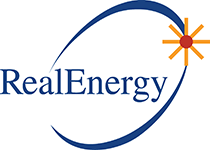 Napa, California – Lee Lundberg, PE will be presenting a white paper coauthored by him and Kevin Best, RealEnergy at the Air and Waste Management Association (AWMA) 110th annual event “Bridging Environment, Energy and Health” event on Wednesday June 7, 2017 in Pittsburg, Pennsylvania.
Napa, California – Lee Lundberg, PE will be presenting a white paper coauthored by him and Kevin Best, RealEnergy at the Air and Waste Management Association (AWMA) 110th annual event “Bridging Environment, Energy and Health” event on Wednesday June 7, 2017 in Pittsburg, Pennsylvania.
Wastewater Treatment Plants (WWTPs) generate residue that can be dewatered to a total solids content of 20-25% solids. The residue is referred to as Class A or Class B biosolids, depending on the level of stabilization provided at the WWTP. Class B material is often driven 50-100 miles to a landfill disposal site or to agricultural sites for spreading (weather permitting). As regulations are limiting landfill and spreading, some material goes to composting facilities for further processing to a Class A pathogen free product that can be used freely as a soil amendment or low grade organic fertilizer. On-site or regional biosolids processing to Class A are proposed here.
Past practices to further stabilize biosolids (or raw sludge) have included incineration, which results in a permanent destruction of the nutrient rich material in exchange for a little electricity today. This practice yields an ash product, which has some limited beneficial uses. Sometimes, ash contains elevated heavy metal levels which limit its use and require it to be landfilled. But after several generations of synthetic fertilizer use (from natural gas), soil tilth is often depleted and in need of the recycling of macro and micronutrients in biosolids.
Andritz, RealEnergy and Dresser Rand, a Siemens Company – Recycling as a Service
Public policy in the USA is driving several environmentally sustainable solutions for biosolids including landfill diversion and processing to Class A for beneficial reuse. Like several other sustainable public policies (solar pv and natural gas transportation fuels) private industry often offers lower cost solutions than the status quo. RealEnergy has teamed with Andritz and Dresser Rand, a Siemens Company to deliver a lower cost option to meet these public policy drivers, which is the topic of this paper. The Power Oxidation process utilizes a uniquely designed power island and cogeneration system that offers:
- Lower disposal cost ($66/ton)
- Meets policy drivers of landfill diversion and Class A beneficial reuse
- Deeply negative project NOx, greenhouse gas and carbon content
- Eliminates seasonal management of neighbor land application
- Emissions of less than 1ppm NOx, 10 times cleaner than reciprocating engines or flares.
- Can recycle 10 million gallons of water per year for each 160 wet ton/day processed
- Can utilize very low-grade biogas from active/closed landfills (as low as 15% methane)
This paper will illustrate the performance, economics and environmental benefits of this system applied to a 160 wet ton per day biosolids generator (WWTP). The Power Oxidation system can be installed in an area as small as an 80’x100’ footprint with no building required. The system utilizes a ‘non-combustion’ turbine and power oxidizer to generate 2MW of on-site electricity and enough waste heat to thermally dry the 160 wet tons per day of biosolids with a paddle dryer. The Power Oxidizer can use natural gas, onsite WWTP biogas or landfill gas to generate renewable electricity without any significant gas cleanup. The Power Oxidizer manages the odors from the thermal dryer through a sealed system. The dry product (92% total solids) is considered Class A biosolids. Installation of this system results in significantly reduced transportation requirements, saving 2,000 long haul truck trips every year, generating deep carbon, NOx and other emissions reductions.
The system provides an economical, sustainable and environmentally sound solution to processing of biosolids and power generation near the point of biosolids generation and is available as a service priced at or below projected avoided costs. Removal of existing cogeneration plants can be included to free up on-site space.
An Integrated Design Charrette may be helpful to discern your preferred biosolids drying solution!
For the white paper, click here Regional Biosolids Drying with Negative Carbon Oxidation
